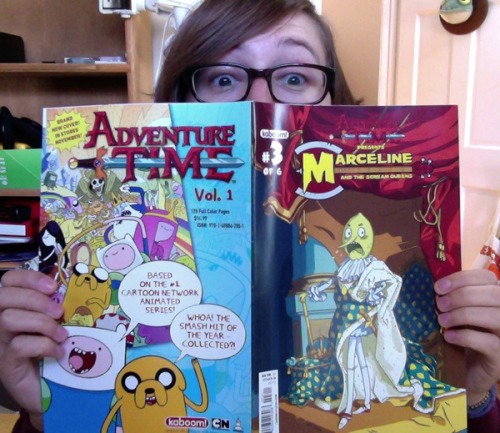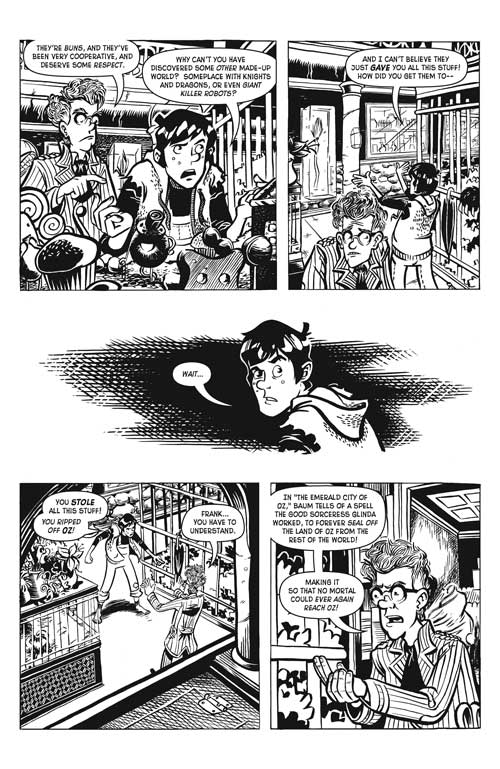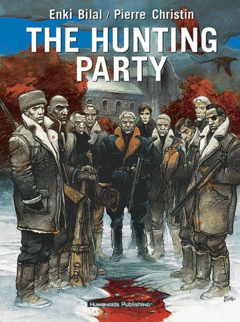 I have finished eleven reviews over the last three months. I write these reviews because I like the books and I want to let everyone know how to find and support them. The thing is once I publish a review I continue to get updates from and about artists. As I move on to the next artist I am getting all these awesome little tidbits that I haven't been sharing. I asked Geoff Vasile for permission to use images from his books. He said sure. He also said that he was moving most of his web-presence to The Geoff Vasile Show! on tumblr. I bit the bullet and set up a tumblr account. I found out that about half of the artists who had stopped updating their web pages are now posting on tumblr. On a side note, Vasile posted this new slick silk screened cover for issue four of Trackrabbit.
I have finished eleven reviews over the last three months. I write these reviews because I like the books and I want to let everyone know how to find and support them. The thing is once I publish a review I continue to get updates from and about artists. As I move on to the next artist I am getting all these awesome little tidbits that I haven't been sharing. I asked Geoff Vasile for permission to use images from his books. He said sure. He also said that he was moving most of his web-presence to The Geoff Vasile Show! on tumblr. I bit the bullet and set up a tumblr account. I found out that about half of the artists who had stopped updating their web pages are now posting on tumblr. On a side note, Vasile posted this new slick silk screened cover for issue four of Trackrabbit.  |
| Robinson's take on Fin & Jake |
Hirsch did the art for the B alternate cover for the third issue of Adventure Time:Marceline and the Scream Queens. He will also be doing a cover of another issue in November. Hopefully this is a good link, if not he posted both covers at It's Andy Hirsch. The six issue Marceline series were done by Meredith Gran. Gran has been rocking out her own web-comic called Octopus Pie. Octopus Pie: There Are No Stars In Brooklyn, is a hoot and brought back the few fond memories I have of Brooklyn. Hirsch 's cover highlights Liz Prince's seven page back-up story. I ran out and got it but starting at issue three of six left me a little at sea. Gran's work seams like some solid story telling. Prince's back-up story Fruit Salad Days is hilarious and stands on its own. With the Hirsch cover it is totally worth the cover price all on its own.
 |
| Prince with Hirsch's Cover |
 I came across two things slated for 2013 that have me chomping at the bit. Monica Gallagher had mentioned that she had done some work for Oni but she has now announced that Glitter Kiss will be coming out in January. She is also stepping up Bonnie N. Collide to a twice weekly comic strip! There are also all her mini-comics Boobage, When I Was A Mall Model and Go For The Eyes that I hope to review. The 2013 news that has me jumping up and down is issue number four of Varmints! I am not normally an exuberant guy. As far as content goes, on the surface of it, Varmints is one of the lighter books that I follow. While deeper things are developing, each issue stands on its own as a little comic adventure. Hirsch recently posted a page that reminded me why I just can't wait to see where his work is going. I have been accused of being dourer and I do hate musicals. So why am I so giddy? It is the audacity of having a singing dancing extravaganza conveyed only in static silent juxtaposed illustrations. I would call bullshit on many others artists, but he makes it look easy. You should go to It's Andy Hirsch and look at the larger image. I could (and may) write a entire review just on this page.
I came across two things slated for 2013 that have me chomping at the bit. Monica Gallagher had mentioned that she had done some work for Oni but she has now announced that Glitter Kiss will be coming out in January. She is also stepping up Bonnie N. Collide to a twice weekly comic strip! There are also all her mini-comics Boobage, When I Was A Mall Model and Go For The Eyes that I hope to review. The 2013 news that has me jumping up and down is issue number four of Varmints! I am not normally an exuberant guy. As far as content goes, on the surface of it, Varmints is one of the lighter books that I follow. While deeper things are developing, each issue stands on its own as a little comic adventure. Hirsch recently posted a page that reminded me why I just can't wait to see where his work is going. I have been accused of being dourer and I do hate musicals. So why am I so giddy? It is the audacity of having a singing dancing extravaganza conveyed only in static silent juxtaposed illustrations. I would call bullshit on many others artists, but he makes it look easy. You should go to It's Andy Hirsch and look at the larger image. I could (and may) write a entire review just on this page.That's it for now. I still have a stack of mini-comics to get through before I see what people bring to Artists' Alley at Austin Comic Con.

































